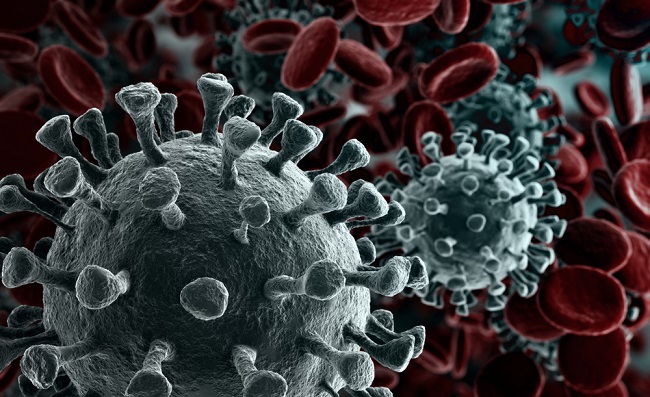COVID-19 was introduced on multiple occasions to Scotland in February and March 2020
Published: 9 June 2020
Scientists sequencing the virus samples from the first confirmed cases of COVID-19 in Scotland have determined multiple introductions, mainly from European countries such as Italy, Austria and Spain – and showed that Scotland’s first introductions of the virus likely occurred prior to the country’s first confirmed case on March 1st.
Scientists sequencing the virus samples from the first confirmed cases of COVID-19 in Scotland have determined multiple introductions, mainly from European countries such as Italy, Austria and Spain – and showed that Scotland’s first introductions of the virus likely occurred prior to the country’s first confirmed case on March 1st.

In order to provide timely information during this critical period, this research has been published on medRxiv and the full pre-print study. It should be noted that the findings have not yet been peer-reviewed.
By looking at full genome sequences of SARS-CoV-2, the virus that causes COVID-19, the researchers found that the virus was introduced at least 113 times during the first four weeks of the outbreak in Scotland, mainly from other European countries. The confirmed travel-associated introductions of SARS-CoV-2 into Scotland predated both UK travel restrictions and extensive restrictions in other European countries.
Some of the inferred introductions of the virus were not associated with reported travel, so the authors conclude that several early introductions of the virus were undetected and quickly established community transmission in Scotland. A dramatic shift from travel-associated to sustained community transmission was apparent from the 11th of March, 10 days after the first detected case.
The study investigated the emergence of the virus in Scotland during March. The researchers obtained full genome sequences from 466 individuals using next generation sequencing technology in real-time of 20% of all confirmed diagnoses of the disease.
Emma Thomson, Professor of Infectious Diseases at the MRC-University of Glasgow Centre for Virus Research, said: “Our study confirms SARS-CoV-2 entered the Scottish population through at least 113 separate travel-related introductions, leading to multiple clusters of sustained community transmission. We identified viral lineages with no link to travel as early as three days after the first detection of infection, indicating earlier introduction to Scotland and community spread before the first detected case.”
“The emergence of continental Europe as the epicentre of the global COVID pandemic was a clear driver of the Scottish outbreak, with the majority of the lineages detected in this study related to European sequences. Cases with links to China and other countries in South-East Asia were comparatively not detected.”
“The speed at which the virus took hold in Scotland and the UK as a whole following multiple introductions, mainly from other European countries, was extremely rapid. It is possible an earlier lockdown from countries with a high burden of cases, such as Italy, and other measures such as quarantine of travellers from high-risk areas, might have prevented escalation of the outbreak and multiple clusters of ongoing community transmission.”
“Tracking the new coronavirus using sequencing and phylo-epidemiological analysis may help to inform our current response and the effect of public health interventions in real-time and is a tool that can be used to understand future infectious disease outbreaks of this nature.”
The genomic sequencing of pathogens, has become a core component of the epidemiological response to virus outbreaks, for example Ebola in the Democratic Republic of Congo or Zika in South and Central America. In this study, researchers at the MRC-University of Glasgow Centre for Virus Research who have been using this technology in Uganda switched to sequencing the SARS-CoV-2 virus in Scotland, alongside NHS partners at the West of Scotland Specialist Virology Centre and the Royal Infirmary of Edinburgh. The resulting data gives scientists enhanced knowledge of the origin and transmission of the disease, and by analysing the introductions of COVID-19 in Scotland, the information on the extent and spread of the virus can help inform targeted public health interventions.
Prof Thomson added: “As the number of cases subside in Scotland, our sequence data can provide a baseline for real-time sequencing of ongoing infections, which can act as a measure for policymakers of the success of current measures and contribute to the easing, or tightening, of public health measures.”
Dr Kate Templeton, Consultant Clinical Scientist, University of Edinburgh, said: “The introduction of this sequencing approach has been a great collaboration between the University of Glasgow and University of Edinburgh. The work in Edinburgh for this study was only possible from joint working with University and NHS scientists. The ongoing work is reliant on contributions from NHS clinical and diagnostic laboratory staff across Scotland. Their efforts have helped us build up a truly national picture of the introduction and ongoing spread of the virus, and will provide important information to guide policymakers in how to respond to this pandemic.”
During the period of sampling (February 28, 2020 to April 1, 2020), 2310 positive cases of COVID-19 were detected (Scotland Open Data, https://statistics.gov.scot). These confirmed infections were associated with 1832 hospital admissions, 207 intensive care admissions and 126 deaths.
The study, ‘Genomic epidemiology during the first month of SARS-CoV-2 spread in Scotland highlights the role of European travel in COVID-19 emergence,’ is published in medRxiv. The study was funded by the MRC, UKRI and Wellcome.
First published: 9 June 2020
<< 2020




